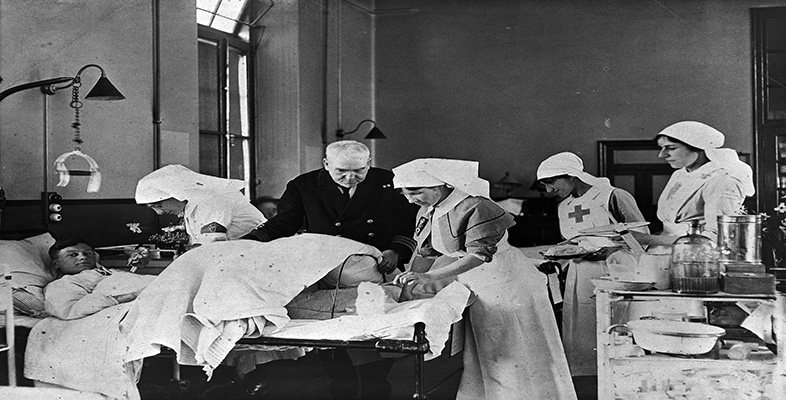4.5 Section summary
This section has given some of the sense of how historians work – by developing explanations of historical events, which are in turn challenged by new research that re-examines these ideas. In the case of the nineteenth-century asylum, much of the research carried out since the 1980s is based on new sources and detailed case studies which test old explanations for the timing and causes of the growth of asylums. In part, this reflects a trend in other areas of medical history and in the broader field of social history.
The result has been to challenge the nature of the link between the growth of asylums and the forces of broader social change – urbanisation, industrialisation and capitalism. Detailed work suggests that links between urbanisation and asylums are not straightforward: asylums did not grow up in large cities (which were thought to be inappropriate sites for such institutions), and their patients came from both urban and rural areas. Urban life did not necessarily undermine the social bonds within the family that helped to support a mentally disordered family member – families facing such a strain tended to stay put. Admission to the asylum was not merely, and often not directly, a response to economic difficulty, but was also closely bound up with the longer-term emotional strain of dealing with violent and difficult family members. Its meanings were wider and more variable than has formerly been postulated in terms of the socio-economic and life-cycle pressures on families in variously configured industrialising, commercialising regions and societies. Such findings suggest the need to recognise and explore personal experiences of dealing with insanity in different regions before patterns of resort to the asylum in the Victorian age can be explained.
It is difficult to pin down how changes in the treatment of the insane and the rising status of doctors specialising in mental disorder may have fed into the growth of asylums. While reforms within asylums – the replacement of physical restraint with moral therapy, and the domestication of asylum architecture, amenities and furnishings – undoubtedly made the asylum seem a more pleasant place to the families of the insane, these reforms seem to come too late to explain the growth in asylum numbers. Similarly, improvements in the status of doctors dealing with asylum patients (which owed little to their ability to cure patients) came in the second half of the century, when the asylum had already achieved its place as an important (although as we have seen, not the only) means of dealing with the insane. New research on the roles of the legal and welfare authorities also suggests that we should not place too much weight on the role of medical men in driving change.
